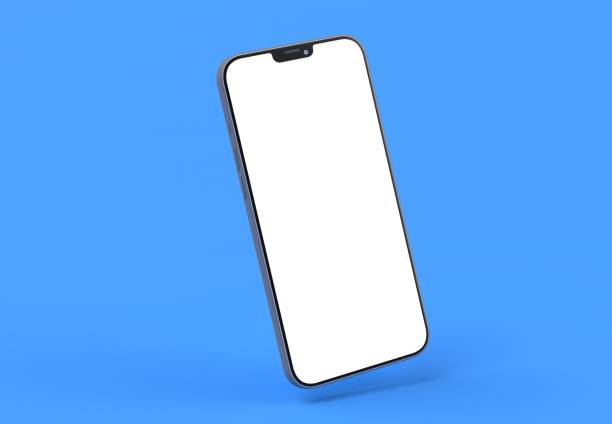Things to Consider While Outsourcing the Embedded Systems Design

Embedded systems have become an integral part of modern technology and are found in a wide range of products we use every day. From smartphones to cars to medical devices, embedded systems power the world around us. As products become more advanced, the embedded systems inside them increase in complexity. Many companies find that outsourcing the design of these complex embedded systems makes strategic sense.
-
Understand your product requirements.
As with any design project, everything starts with fully understanding your requirements. What features and functionality do you expect from the embedded system? What performance specs need to be met? How long should the system last before failure? Outlining these product requirements in detail ensures you choose an embedded solution company capable of delivering what you need. Discuss your target markets, expected use cases, regulatory standards, and business goals with potential providers during the vetting process. An experienced embedded it solution partner will help translate your goals into technical specs to guide the design.
-
Evaluate their embedded systems expertise.
There’s no substitute for experience when it comes to creating a successful embedded system. Review potential vendors thoroughly to ensure they have expertise specifically in embedded design services rather than just general electrical engineering capabilities. Ask for examples of past client work that mirror the scale and complexity you require. Verify how many years designers have spent focusing on embedded systems and what knowledge they have about leading hardware and software tools. Expertise and lessons learned from years of designing embedded systems for a wide spectrum of clients will prove invaluable for avoiding pitfalls and navigating key decisions.
-
Assess their communication and collaboration processes.
Outsourced projects thrive through ongoing, transparent communication between client product managers and remote development teams. Embedded solution companies should provide a detailed overview of their communication standards and collaboration tools. Look for partners that leverage modern platforms for project management, secure document sharing, visual design prototypes and annotations, daily standups, bug tracking, and more. Ask how they capture product requirements, track progress, prioritize tasks, and share insights across locations and time zones. The embedded IT solution you choose should integrate seamlessly into your workflow.
-
Review their development processes and quality standards.
In addition to domain expertise, your chosen partner should follow strong processes for embedded product development and quality assurance. Ask potential vendors to outline their design cycle, from concept to finished product. What design standards, modeling techniques, validation checks, and best practices guide their work? They should adhere to ISO or IEC quality frameworks. Make sure they leverage automation, testing frameworks, and inspection protocols rather than relying solely on manual reviews. Stringent development and testing processes result in more robust embedded system designs.
-
Assess technical capabilities and resources.
An experienced embedded solution company will leverage cutting-edge design tools and have a breadth of technical skills at their disposal. Ask potential partners what software tools their engineers use for tasks like digital logic design, PCB layout, schematic capture, simulation, automated testing, and product lifecycle management. These tools can vary widely across the industry. Ensure your vendor’s choices align with the scale and nature of your project. Beyond software, review available lab equipment, testing tools, rapid prototyping technology, and manufacturer relationships. The breadth of technical infrastructure indicates capacity to handle varying design scenarios.
-
Evaluate security expertise.
Security should be top of mind for any embedded system bound for today’s threat-filled landscape. Whether targeting an IoT ecosystem or an industrial control system, embedded designs must incorporate countermeasures against cyber attacks and data theft. Rigorously assess the information security knowledge of potential vendors. Do they hold industry certifications for secure embedded systems? Make sure they can demonstrate past experience implementing cryptography, access controls, data protection, anti-tamper mechanisms, and other safeguards to prevent unauthorized access. A partner well-versed in security concepts can create hardened designs resistant to interference.
-
Review manufacturing partnerships and support
Even an elegantly designed embedded system PCB means little without a way to manufacture it economically at scale. Start conversations with potential partners early about manufacturing considerations and their existing production relationships. An embedded solution company with close ties to domestic and overseas manufacturers provides flexibility to meet production timelines, quality thresholds, and BOM cost targets. Additionally, assess the post-launch support your vendor provides should issues arise once systems are deployed in the field. They should demonstrate the capacity to debug problems, suggest enhancements, and keep your system current across future product generations.
-
Assess the cost impact.
With engineering resources accounting for a sizable portion of any embedded product BOM, the costs of outsourcing development are not trivial. However, viewed strategically, outside expertise also provides the opportunity to transform fixed costs into variable ones, offering greater flexibility. Work with prospective vendors to understand how they structure pricing and how costs scale across project stages, from prototyping to testing to production. Look for options aligned with your budget realities and opportunities to reduce expenditures through multi-project partnerships. What may cost more upfront can pay dividends down the road thanks to increased quality, a faster time to market, and higher reliability.
-
Evaluate their testing and validation capabilities.
The testing and validation phase is critical for ensuring an embedded system operates reliably under the customer’s actual usage conditions. Assess potential vendors based on the scope and depth of testing they conduct before signing off on a design. At a minimum, they should describe their plans for subsystem testing, system integration testing, environmental stress testing, longevity testing, and EMI/EMC testing. Ask questions about test coverage for components, use cases, and edge cases. Look for ample automated testing to complement manual quality checks by engineers. Vendors should also outline validation plans to confirm designs meet stated product requirements.
Conclusion
Embedded systems entail intricate pcb design service demands that often benefit from outside expertise. As PCB and firmware complexity increases across industries, outsourcing development to a specialized embedded solution company provides access to proven skills and processes. However, like any key business relationship, you must vet potential partners thoroughly. Use the guidelines outlined here during evaluations to choose a vendor that melds strategic vision with technical implementation for your next embedded systems project. The expertise and effectiveness of your embedded IT solution partner set the ceiling for product innovation and marketplace success. Leverage these lessons for making partnership decisions that get your cutting-edge product to market without cutting corners.
In addition, “goofy ahh pictures” have the ability to transcend language and cultural barriers, bringing people from different backgrounds together through shared laughter and amusement. They serve as a universal language of joy and silliness, reminding us that humor is a powerful tool for building connections and fostering understanding.




